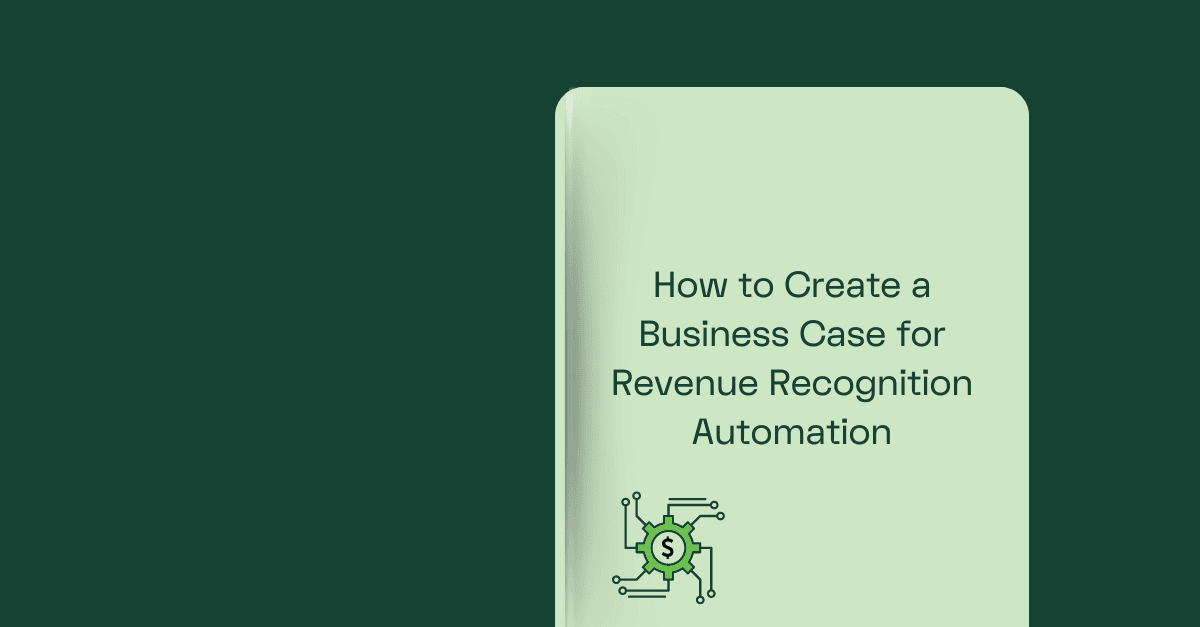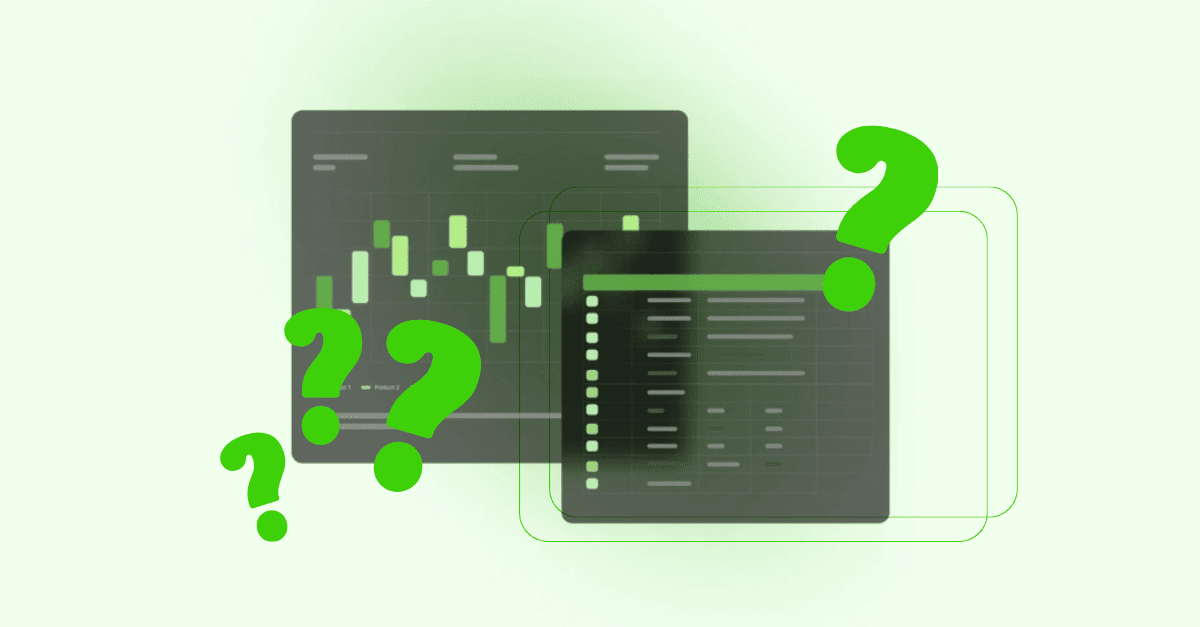Revenue recognition errors remain one of the most common causes of financial restatement. According to research firm Audit Analytics, revenue recognition issues are the second most common cause, accounting for 12% of financial restatements. In addition to being expensive, restatements can be detrimental to a company’s reputation and cause investors to mistrust the company. However, often, the CFO isn’t familiar with the downstream processes and challenges that cause revenue recognition errors. If you’re a Controller or Director of Accounting who is looking to make a case for revenue recognition automation, we can help!
Most companies are trying to navigate revenue recognition challenges through a combination of manual processes, spreadsheets, and legacy accounting systems. This three-headed hydra is bad news for business—old-school systems have limitations when it comes to managing revenue recognition complexity, ensuring accuracy, and staying compliant.
The modern way to deal with your revenue recognition challenges? Automation.
If you believe automating revenue recognition processes could transform your current processes for the better, this article is for you. Let’s talk about how you can make a case for revenue recognition automation.
What Should Modern Revenue Recognition Look Like?
Modern revenue recognition should be real-time, accurate, automated, and scalable. Let’s talk more about the ideal state of revenue recognition you should aim for:
- Accurate revenue calculations: Accuracy is mission-critical because financial restatements can be expensive and time-consuming. Aim for zero errors in revenue recognition to minimize the cost of financial restatements through revenue recognition software and robust internal controls for financial reporting. A discrepancy in revenue recognition can have profound implications- not only affecting potential restatements, but a decline in investor or board confidence.
- Automated revenue recognition processes: Manual revenue recognition is prone to errors. In fact, 40.6% more companies reported material weaknesses in 2022 due to a lack of personnel, mainly in accounting and IT, than in 2019. Long hours and repetitive, mundane tasks lead to lower job satisfaction and engagement, resulting in slower processing times and errors. Automation addresses both problems, making your revenue recognition processes frictionless and error-free.
- Versatile: Use a revenue recognition solution that’s versatile enough to fulfill your current and future revenue recognition needs. Find a solution that can audit-proof your revenue recognition processes and help you stay ASC 606 and IFRS 15 compliant whether you offer subscriptions, services, usage-based consumption, or a hybrid business model.
- Real-time reporting: Use a solution that offers real-time reporting to find opportunities and business-critical insights. Analytics also gives you visibility into your revenue streams, performance trends, revenue forecasts, and potential risks. Having real-time analytics allows you to focus on providing strategic insights to your finance counterparts like FP&A, instead of building manual reports.
- Tech-stack friendly: Integrate your revenue recognition software with other tools in your tech stack, like your General Ledger to allow frictionless data exchange. For example, your revenue recognition software should easily ingest information from your order management tool and export Journal Entries to your ERP via APIs.
- Scalable: As your company grows, so will your data requirements; compounding the level of effort required to recognize revenue using manual processes and significantly increasing the risk of errors. An automated solution should meet your data volume and processing requirements now and for your expected growth in the future. Today’s enterprise companies demand a solution that can easily handle high volume while providing fast access to reports without slowing down business.
In a third-party study, RightRev demonstrated the ability to process nearly a billion transactions within minutes. If you’re a mid-size or enterprise organization growing at massive speed, this is the type of revenue recognition software you need.
How to Make a Case for Revenue Recognition Automation
Now that you know what an ideal state of revenue recognition looks like, let’s bridge the gap and talk about how you can achieve that state. Here’s a simple, step-by-step guide:
- Assess Current Revenue Recognition Processes
Assess your current revenue recognition processes to find room for improvement. Here’s how:
- Look at process documentation: If you have process documentation, look at the flow of the information from sales to finance and accounting. The documentation can also give you details about the stakeholders involved in the process and their roles and responsibilities.
- Identify data sources and current technology and systems: Identify data sources used in revenue recognition—sources could include sales contracts, invoices, billing systems, and CRM software. Then review the technology and systems in place used to handle that data—this could include spreadsheets or manual paper-based processes.
- Find gaps and challenges: Identify the gaps in limitations and functionality that you can bridge with revenue recognition automation software. Also, identify pain points in your current revenue recognition process—this might include data entry errors, processing delays, lack of visibility into revenue streams and status, or difficulty reconciling revenue with sales contracts.
- Define the Objectives of Revenue Recognition Automation
Clearly articulate the positive outcomes you expect after implementing revenue recognition automation. To make a compelling case for adopting revenue recognition automation, it is essential to align the proposal with corporate goals and key performance indicators (KPIs). Here are some examples of objectives and benefits you can include:
- Easy to ensure compliance: Revenue recognition software enforces compliance rules, flags potential issues, and generates audit trails. This helps ensure compliance with ASC 606 and IFRS 15.
- Improved accuracy: Automating the process can eliminate most errors. This reduces the need to spend time and money on restatements and fixing Excel formula errors.
- Timely reporting: Revenue recognition automation software consolidates data from multiple sources and creates interactive reports. Timely reporting is vital for strategic planning, performance evaluation, and closing the books. Choose a revenue recognition software that offers real-time reporting and generates contact and revenue metrics as transactions occur.
- Cost savings: A streamlined quote-to-revenue process, reduced manual effort, and minimal errors translate to lower operational costs associated with revenue recognition. Revenue recognition systems also help identify leakage and optimize revenue streams, which further reduces operational costs. Reduce audit costs by ensuring revenue accuracy and auditability with an automated solution like RightRev.
- Enhanced efficiency: An automated system frees up your team’s time from mundane and repetitive tasks like data entry, calculations, and approvals. This allows your team to invest time in more strategic tasks.
- Smarter decision-making: Revenue recognition software gives you access to reliable revenue metrics and insights. This enables you to make data-backed decisions regarding:
- Pricing strategies
- Investment opportunities (based on emerging trends, customer preferences, and market dynamics)
- Resource allocation among business units, products, or geographic regions
- Future-proof the business: Finally, demonstrate the potential for scalability with the right solution, ensuring the company’s readiness for growth and expansion while maintaining robust revenue management practices.
- Engage Stakeholders and Seek Their Input

Speak to stakeholders across departments, including finance, accounting, IT, and operations. What do they think about your initiative to automate revenue recognition? How will it make their roles and cross-functional collaboration easier? Perhaps you can achieve fewer invoicing mistakes, better alignment with FP&A, etc. by engaging with adjacent teams. Support from key stakeholders in these departments goes a long way.
- Select a Vendor
Here are some things to consider when selecting revenue recognition automation software:
- Feature set: Look for vendors with advanced features and a track record of successful implementation.
- Scalability: Can the vendor’s solution adapt to your business’s evolving needs, such as a growing transaction volume and increasing complexity?
- Integrations: Does the vendor offer integrations or APIs to connect to your existing systems, such as the ERP and billing system? Integrations and data accessibility make it easy to ensure a seamless workflow without losing data between disparate systems.
- Review security: Learn about the data security and privacy best practices the vendor uses to protect your data. These could include encryption, SOC compliance, access controls, and regular security audits. Ensuring the security of your financial data is a key aspect of complying with SEC regulations.
- Support and training: Look for a vendor who offers comprehensive training to employees on how to use the automated system and ongoing support.
- Pricing and value: When comparing vendors, consider the total cost of ownership over the long term, including maintenance and upgrade fees. Look for vendors with a transparent pricing structure and who offer value for money regarding features and support.
- Social proof: See if the vendor has any case studies that show how their solution helped another business. Request references from the vendor and ask about their experience with the vendor, including the implementation process, system performance, and support quality.
- Develop a Blueprint for Migration, Training, Testing and Validation, and Implementation
Before full-scale deployment, consider developing a blueprint for the following:
- Prepare Use Cases and User Stories: Document your revenue policies to define when and how to recognize revenue for various products, SKUs, or services. Are there any anomalies that should be considered? Consider future use cases as well.
- Gather data sources: Prepare a plan to migrate data from legacy systems to your new revenue recognition software. Consider all of the data sources that feed into revenue recognition like contract management system, billing and invoicing, your ERP, etc. Make sure your data is clean and comprehensive. Good data is the catalyst for a successful software migration and implementation.
“High-quality data is the foundation for successful implementation and long-term effectiveness of revenue recognition software. A smooth data migration can be the biggest determinant of implementation costs and timelines.”
-Jagan Reddy, CEO, RightRev
- Consider reporting and disclosure needs: Top revenue recognition solutions offer built-in reporting and analytics capabilities that allow you to analyze revenue trends, track performance against targets, and generate financial reports for internal and external stakeholders—no manual effort required. Considering reporting requirements early on in the process will ensure those needs aren’t an afterthought and the system can be configured to address those from the beginning.
- Compliance requirements: In addition to accounting standards like ASC 606 and IFRS 15, are there any industry-specific guidelines that need to be followed? Consider SEC regulatory reporting requirements and data security measures as well. Ensure you can provide detailed audit trails and customizable reporting to facilitate compliance audits and reporting requirements.
- Develop a Change Management and Communication Plan
Communication is the most important part of a robust change management plan. Engage key stakeholders from all levels in your organization to ensure buy-in and support. Communicate with your team and users about the benefits, timeline, and expectations of the new system.
Invite everyone to ask questions and share concerns so you can resolve problems and offer ongoing support to facilitate a smooth transition. Maintain open and transparent communication channels and celebrate milestones throughout the implementation.
The Cost of Ignoring Your Revenue Recognition Woes
Yes, automating revenue recognition comes with a price tag. But the cost of ignoring your revenue recognition challenges is even more expensive. Here’s how:
- Financial misstatement and restatement: Failure to accurately recognize revenue leads to financial misstatements. This could lead to investors making decisions based on incorrect information. Inaccurate information can lead to legal liabilities for your company and everyone else responsible. Take CA Technologies, for example. In 2004, the SEC accused the company of prematurely recognizing revenue worth billions of dollars. The SEC made the company pay $225 million in restitution to shareholders—that’s how expensive inaccurate information can be.
- Reputational damage: Inviting attention for inaccurate revenue recognition negatively impacts your reputation and erodes trust among investors and customers. This could make raising more capital difficult as well as decrease the company’s perceived value.
- Operational inefficiencies: Inaccurate revenue recognition causes delays in billing and difficulties in forecasting cash flows. Of course, you’ll also spend time fixing these errors, which will require more time to close the accounting books.
- Constrained resources: If your accountants spend too much time entering basic transaction data, they can’t focus on what they do best: revenue analysis. By automating revenue recognition, accountants can refocus their efforts on the highest-risk areas rather than data entry.
Say Hello to Revenue Recognition Automation With RightRev
RightRev automates your revenue recognition processes and offers an extensive range of features to simplify revenue recognition for the most complex of contracts.
Whether you’re having a hard time dealing with the nuances of ASC 606 and IFRS 15, multiple revenue recognition methods, or frequent contract modifications, RightRev’s got your back.
If you want to make your revenue recognition process future-ready, request a demo today to learn more about how RightRev can help.




